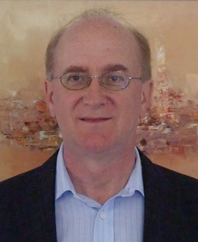Rice University
 报告人简介:
报告人简介:
Boris I. Yakobson is an expert in theory and computational modeling of materials nanostructures, of their synthesis, mechanics, defects and relaxation, transport and electronics. Presently, Karl F. Hasselmann Endowed Chair in Engineering, professor of Materials Science and Nano-Engineering, and professor of Chemistry, Rice University, Houston, Texas. PhD 1982 in Physics and Applied Mathematics, from Russian Academy of Sciences. 1982-1989, Head of Theoretical Chemistry lab at the Institute of Solid Materials of the Russian Academy. 1990-1999, on the faculty of the Department of Physics, North Carolina State University. His research, sponsored over the years by the National Science Foundation, Department of Energy, NASA, Department of Defense, Army Research Office, Air Force Research Laboratory and AFOSR, Office of Naval Research, as well as private industry and foundations, resulted in over 250 publications and seven patents. Received Department of Energy Hydrogen Program Award, Nano 50 Innovator Award from Nanotech Briefs (Boston), Royal Society (London) Professorship Award, Department of Energy R & D Award, NASA Faculty Award. Yakobson has mentored a number of PhD students and postdoctoral associates, serves on the editorial boards of several journals and on steering committees.
报告摘要:
June cover article in C&EN offers a broad retrospect of carbon nanotube research within a framework of Gartner’s hype peak [1], tacitly inviting the readers to similarly gauge the peak phases for graphene or for 2D materials “beyond” it. Accordingly, to give examples of work in my lab, I chose two recent advances in these areas. First one concerns the nanotubes, where it took two decades to derive a kinetic formula [2] R ~ sin x (growth rate R, helical angle x). Further analysis of the subtle balance between the kinetic and thermodynamic views reveals sharply peaked abundance distribution A ~ x exp (-x) [3]. This explains the puzzling (n, n-1) types observed in many experiments. Building on this approach, a combination of DFT and Monte Carlo models explains the low symmetry shapes of graphene on substrates [4]. The second example, inspired by the recent success with boron fullerenes [5], concerns layer-materials and in particular possible formation of so far hypothetical two-dimensional boron, 2D B. How its variable polymorphs, predicted from the first principles, can be controlled by the substrates, and which structures we expect to emerge in experiments [6].
[1] M. Davenport, Chemical & Engineering News, 93, 10-15 (June 8 2015).
[2] F. Ding et al. PNAS 106, 2506 (2009); R. Rao et al. Nature Mater. 11, 213 (2012).
[3] V. Artyukhov - E. Penev et al. Nature Comm. 5, 489 (2014).
[4] V. Artyukhov et al. PNAS 109, 15136 (2012); Y. Hao et al. Science, 342, 720 (2013); V. Artyukhov et al. PRL 114, 115502 (2015).
[5] N. Gonzalez et al. PRL 98, 166804 (2007).
[6] E. Penev et al. Nano Lett., 12, 2441 (2012); Y. Liu et al. Angewandte Chemie, 52, 3156 (2013); Z. Zhang et al. Angewandte Chemie, in press (2015).
邀 请 人: 杜世萱 (电话:82649823 )
联 系 人: 胡颖 (电话:82649361 )

